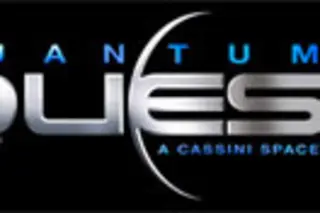When Harry Kloor won the grant from the Jet Propulsion Laboratory (JPL) in 1997 to make a film about the upcoming Cassini-Huygens mission, he knew it would be over a decade in the making: Cassini wouldn't begin to send back data until 2008 at the earliest. It's been worth the wait. Since the probes started sending data back to Earth, scientists from JPL have been helping Kloor's team turn it into the most accurate visual renderings of first few planets of the solar system anyone has ever seen. These reputedly amazing visuals will form the bread and butter of Quantum Quest, an animated, science-fiction, large-format film film that's now been 12 years in the making. Each rendering will be founded on contours developed from radar data, and then surfaced over with visual data, all merged together through CGI. And although the plot will feature a crew of talking neutrinos and ...
If You Wait Long Enough, There *Is* Sound in Space
Discover the making of "Quantum Quest film," an animation blending scientific accuracy and creative storytelling from JPL's Cassini mission.
More on Discover
Stay Curious
SubscribeTo The Magazine
Save up to 40% off the cover price when you subscribe to Discover magazine.
Subscribe













